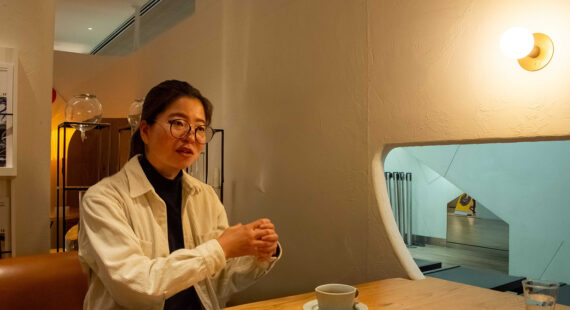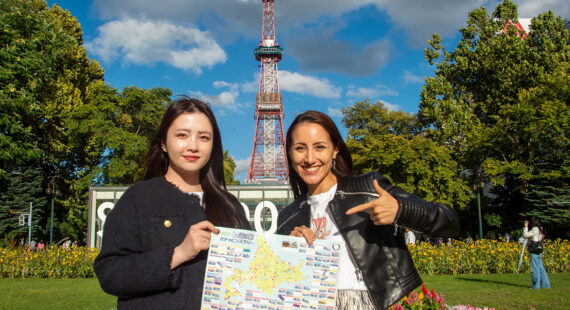Hokkaido’s attractions are too diverse to be described in a single word, but it is a region particularly blessed with nature, surrounded by rich seas, varied mountains, lush forests, spacious wetlands, beautiful lakes and marshes, and a diverse range of flora and fauna that live here, to name but a few.
Hokkaido is also the place in Japan where you can feel the changes of the four seasons the most, and you can always find beautiful scenery, especially in spring when pretty flowers bloom all around, in summer when everything comes alive, in autumn when the yellow leaves are short but vivid, and in winter when the drift ice covers the sea.
The arrival of spring is what we are most looking forward to, especially when the long, hard winter is over and the snow has almost completely disappeared from the cities, and the plants and trees have woken up.
Somebody said “The flowers of early spring occupy places in our hearts well out of proportion to their size”It seems this should be quite natural!
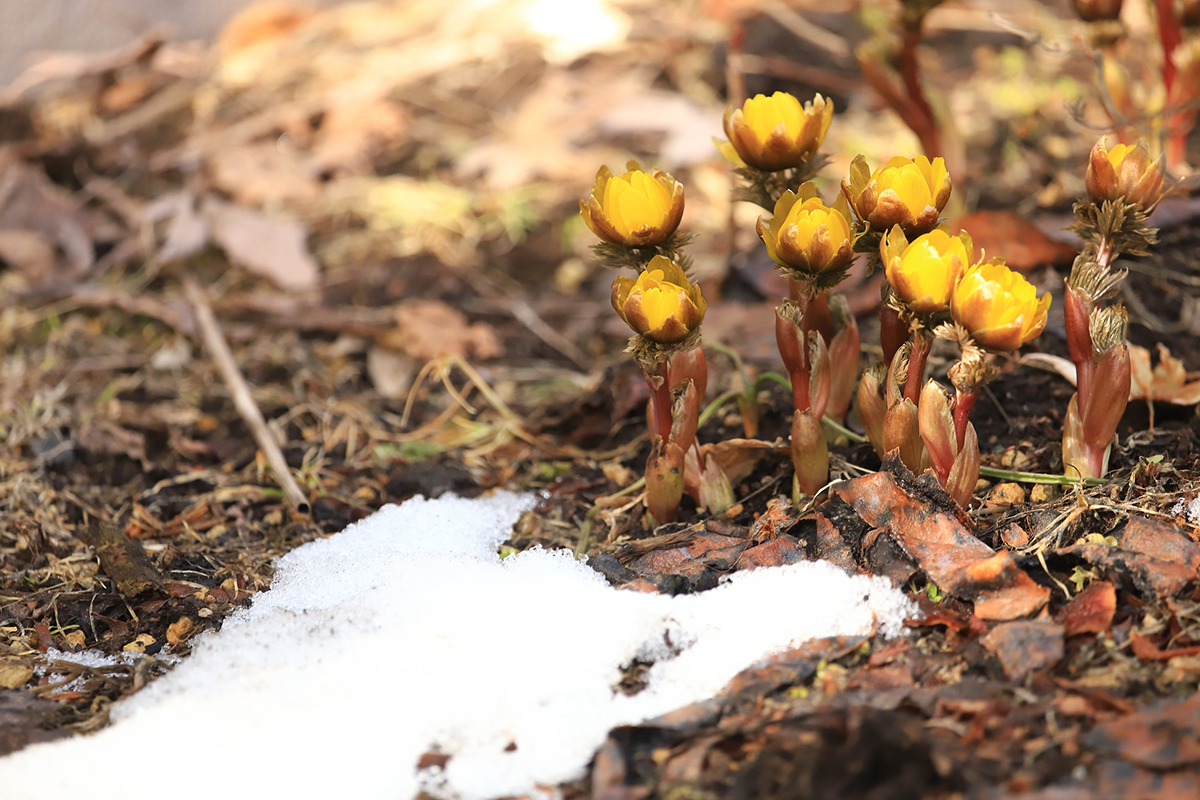
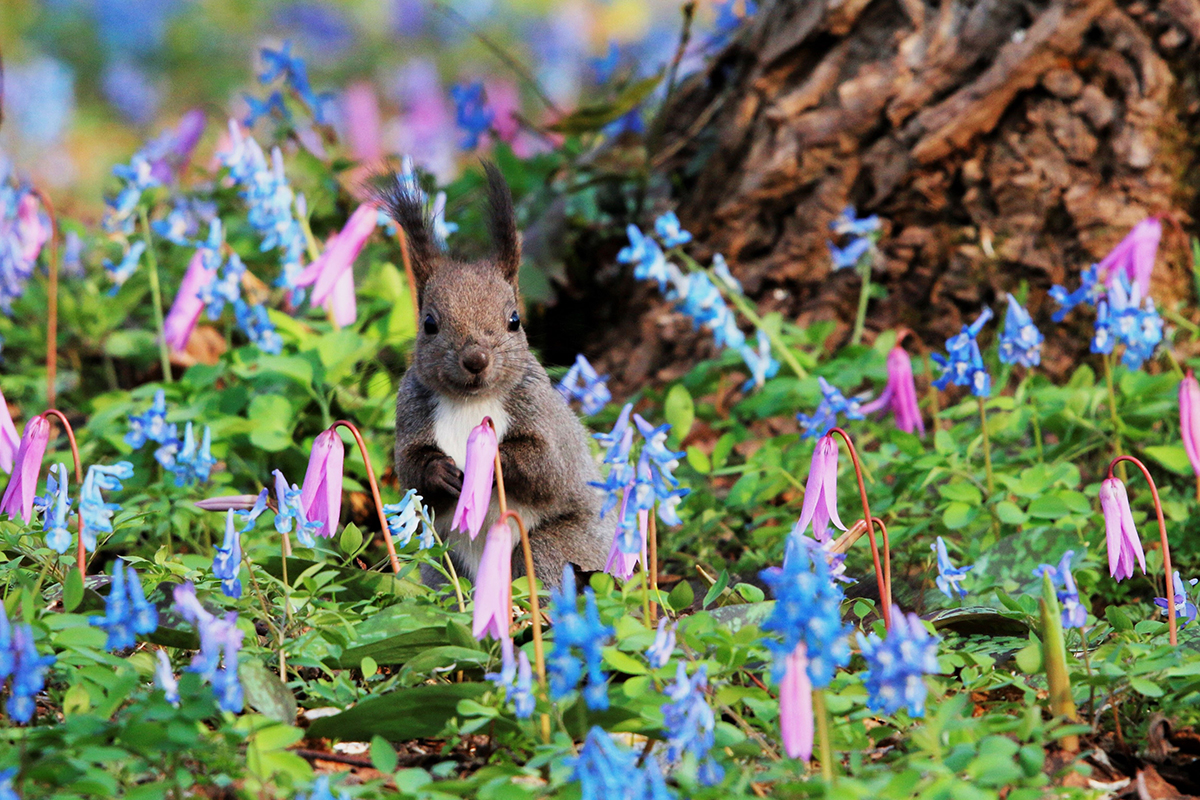
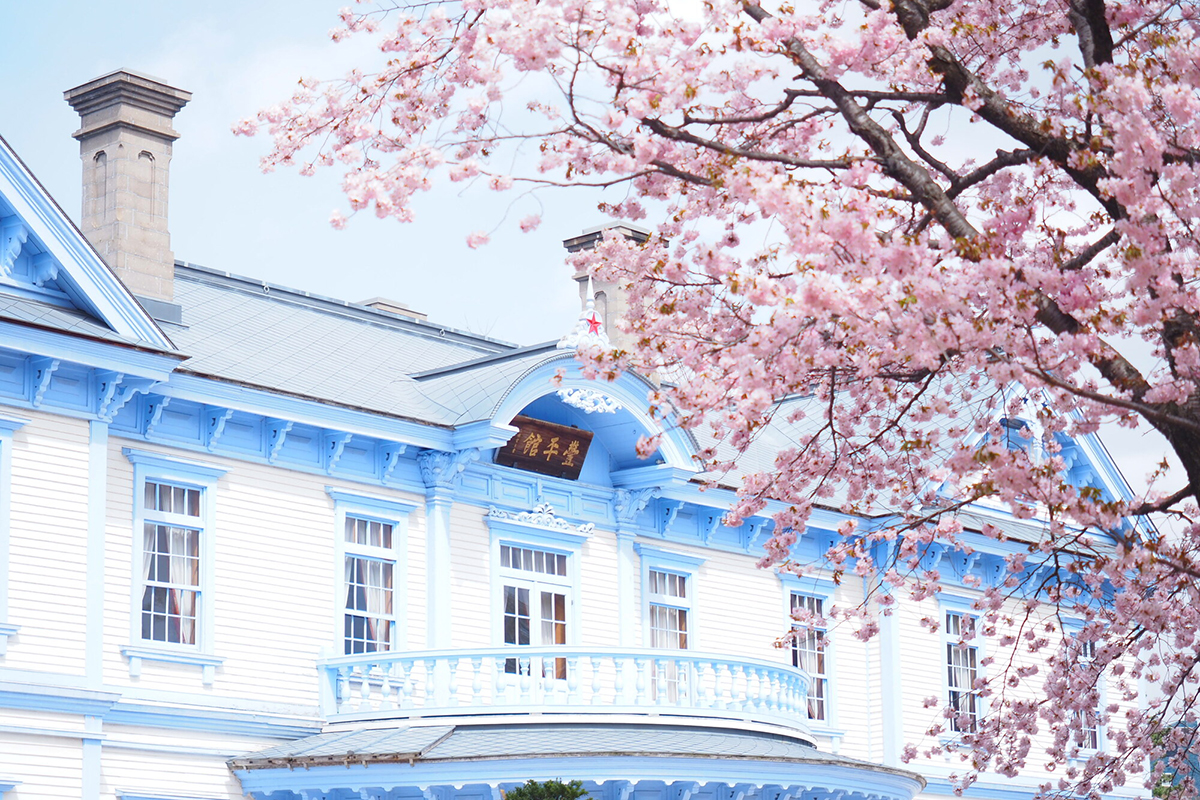
At the beginning of April, the snow begins to melt, and the pheasant’s-eye peeps out of the brown soil. Other ‘spring ephemeral’, short-lived flowers such as the dogtooth violet and the soft windflower also bloom at the same time.
At the beginning of May, the Ezo-Yamazakura or Someiyoshino cherry trees bloom, attracting crowds to parks and other places for flower viewing.
In particular, the flowering season in Sapporo is about a month later than in Honshu, mainland of Japan, with cherry and plum trees blooming all at once.
As the temperature rises, the flowers of both grasses and trees, such as lily of the valley and rugosa rose, start to bloom at once, with the lilac, selected as the tree of Sapporo, blooming around mid-May, followed by the black locust or false acacia and others.
Other spring flowers in Hokkaido include Corydalis, Yellow star-of-Bethlehem, Skunk-cabbage, Marsh marigold, Blue hyacinth and Trillium etc., to name but a few of the wild and garden varieties.
In Japan’s mainland, Honshu, the flowers follow the seasons over a three-month period, but especially in Sapporo, they bloom during this season, making it the most attractive time of the year.
So a trip to Hokkaido, especially Sapporo, at this time of year would be an attractive option for you.
Lilac attractiveness
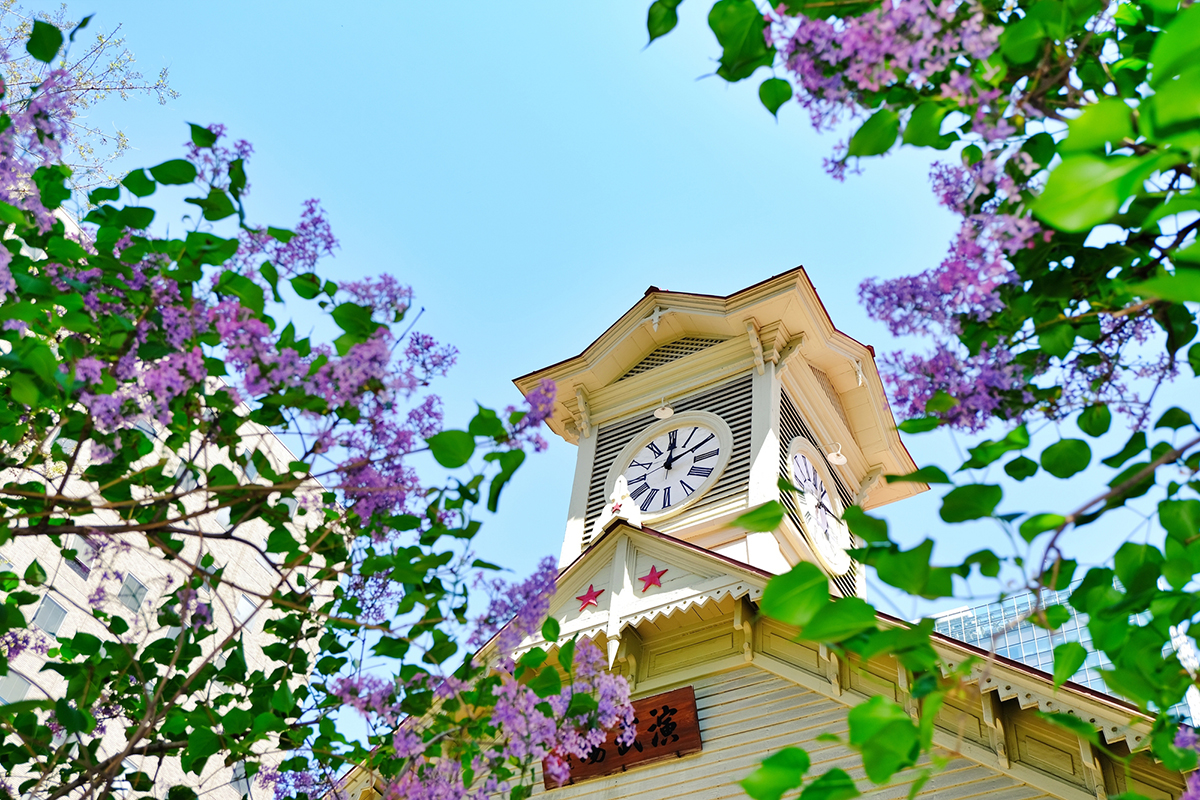
I mentioned earlier that the lilac was selected as the city tree of Sapporo, and it is indeed so famous that among the many flowers, the lilac is the first thing that comes to mind when thinking of Sapporo, and I hope you will love the lilac when enjoying the spring in Sapporo, Hokkaido to its fullest.
So what exactly is its appeal?
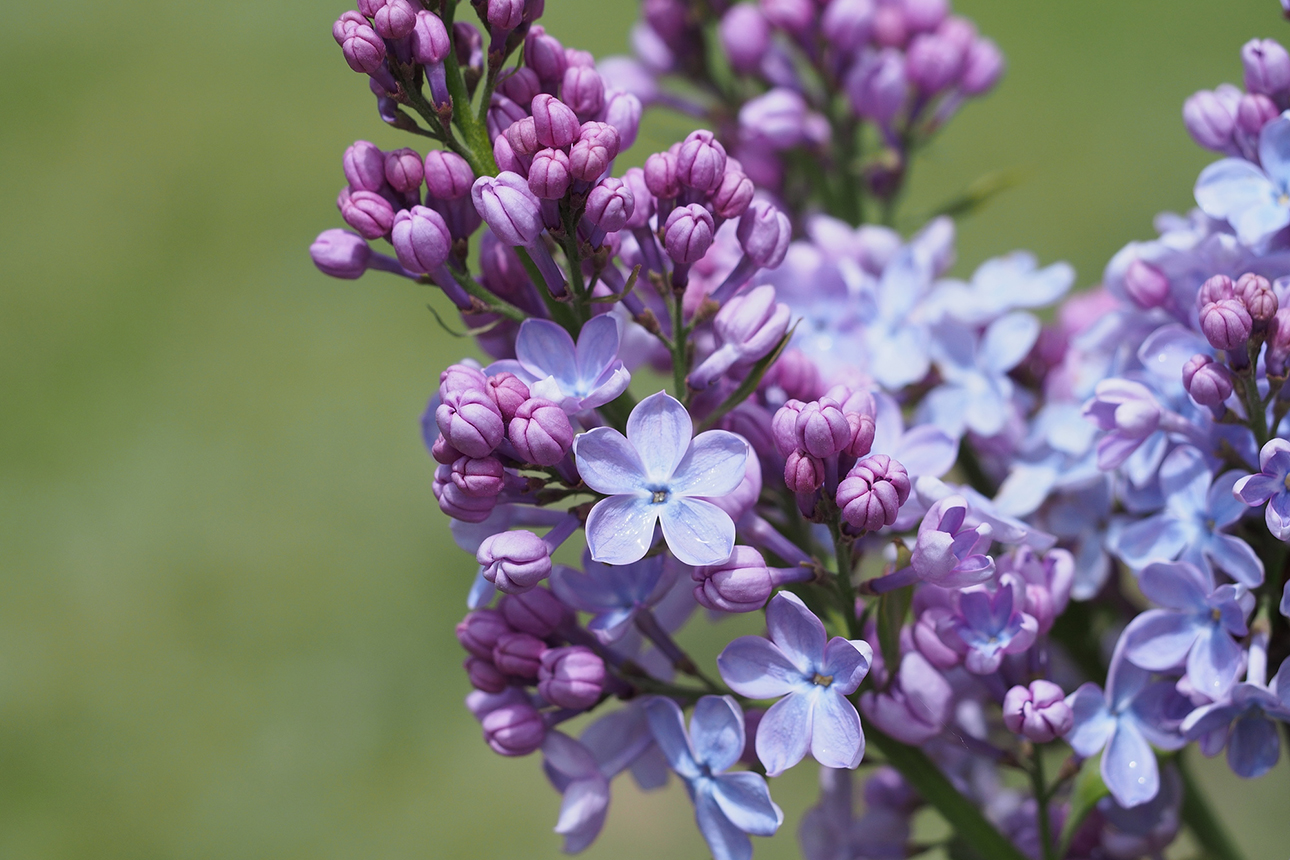

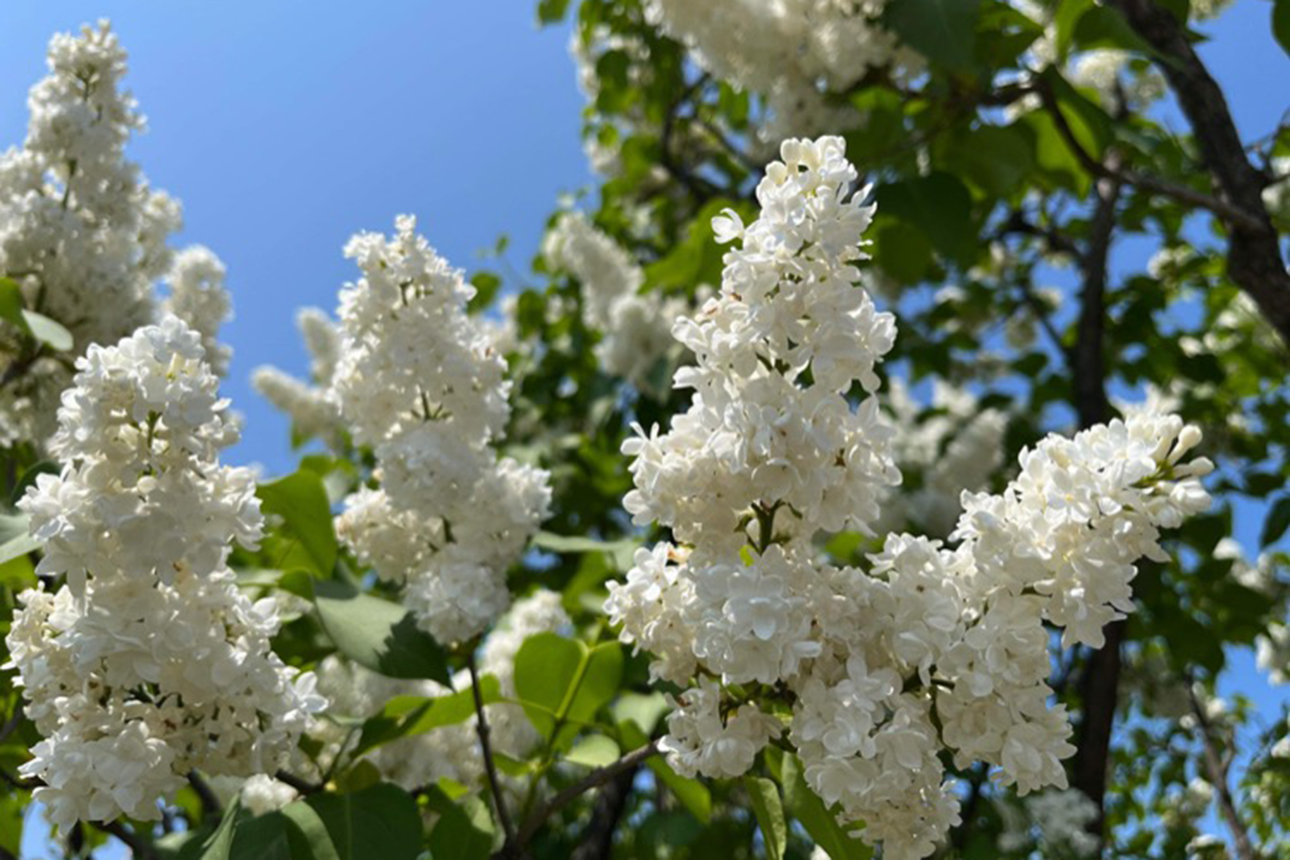
Lilacs have clusters of sweet-smelling flowers, which vary in color from pale purple to pink and white, and are also used to make perfume.
In the perfume world, it is a representative of the four major florals, along with rose, jasmine and lily of the valley, and is the most commonly used floral incense in perfumery. In addition, the fragrance of lilac petals has a calming effect, soothing and relaxing unstable minds. It is also said to increase metabolism and aid weight loss.
Incidentally, although lilacs tend to focus on their flowers, their leaves can look heart-shaped. Often described as ‘egg-shaped leaves’, they look like hearts because the tips of the leaves are narrow and the axils are slightly concave.
Lilacs, with their sweet fragrance and colorful flowers, are an irresistible attraction and can be seen blooming in the gardens of many homes and streets in the cooler climate of Sapporo and other Hokkaido area.
The lilac, also known as ‘lilas’ in French, is said to be native to the Balkan Peninsula and the Crimean Peninsula, and was introduced to Japan during the Meiji era, the latter half of 19th century . It is also very popular in Europe and USA and is often planted as a roadside tree as well.
The language of lilacs also seems to be varied, as it is an extremely popular flower. The leaves resemble the shape of a heart, also giving rise to the flower’s language, which is associated with youthful friendship and a hint of love.
Regardless of the color of the flower, the common floral words for lilacs are ‘friendship’, ‘humility’, ‘memories of youth’ and ‘purity’, but different color flowers have additional different meanings.
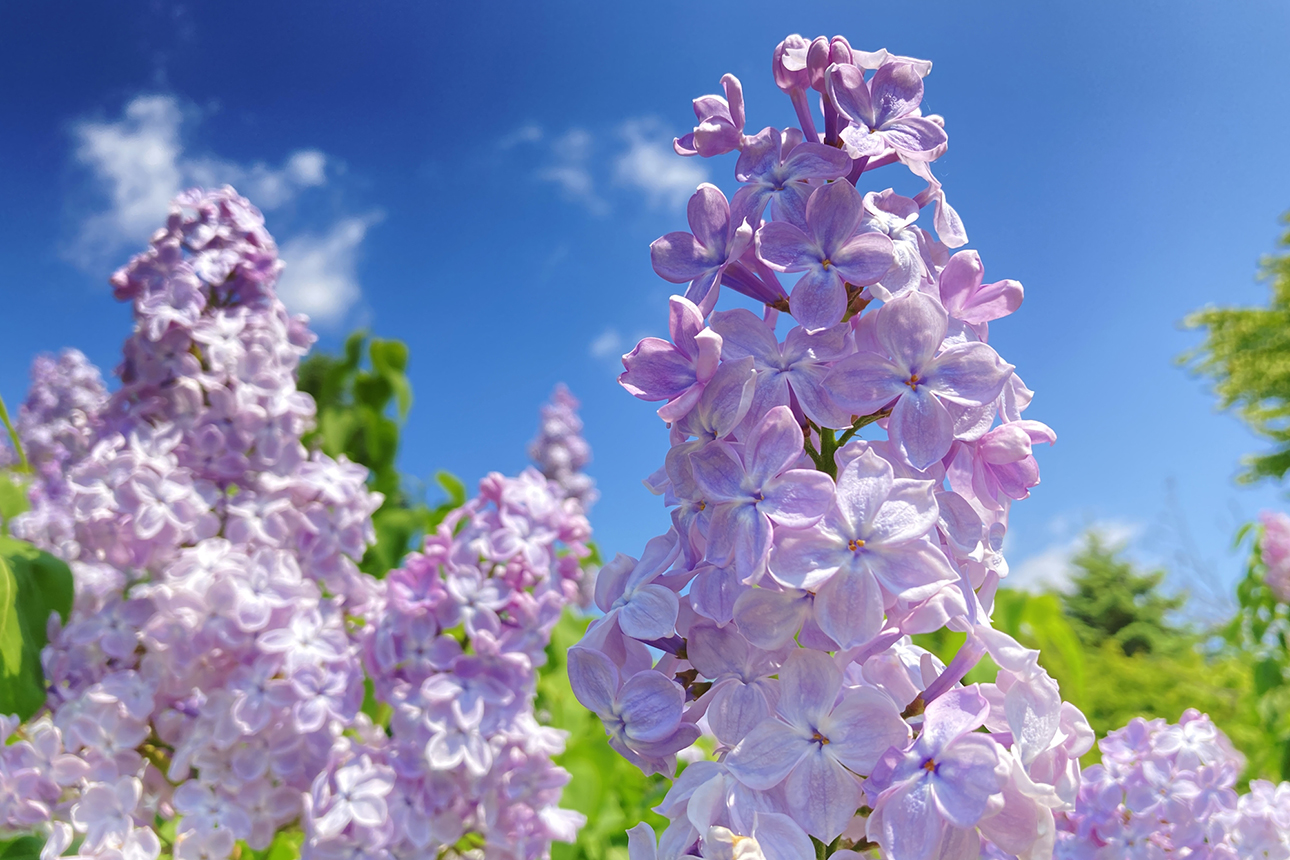

The language of flowers for white lilacs includes ‘joy of youth’ and ‘innocence’. If you give a gift to a friend with whom you spent your youth together, the language of flowers will convey a wonderful feeling. It would also be good for giving to children or grandchildren as a high school or university entrance gift.
On the other hand, there is also this sad episode in England. A commoner’s daughter fell in love with an aristocratic young man of a different status and became engaged to him, but the engagement was broken off when he changed his mind. The girl was so shocked that she committed suicide, and her friend laid a purple lilac on her grave, but the next day, the color of the flower had changed to white. The changing colors of the flowers seem to tell us how changeable the human heart is.

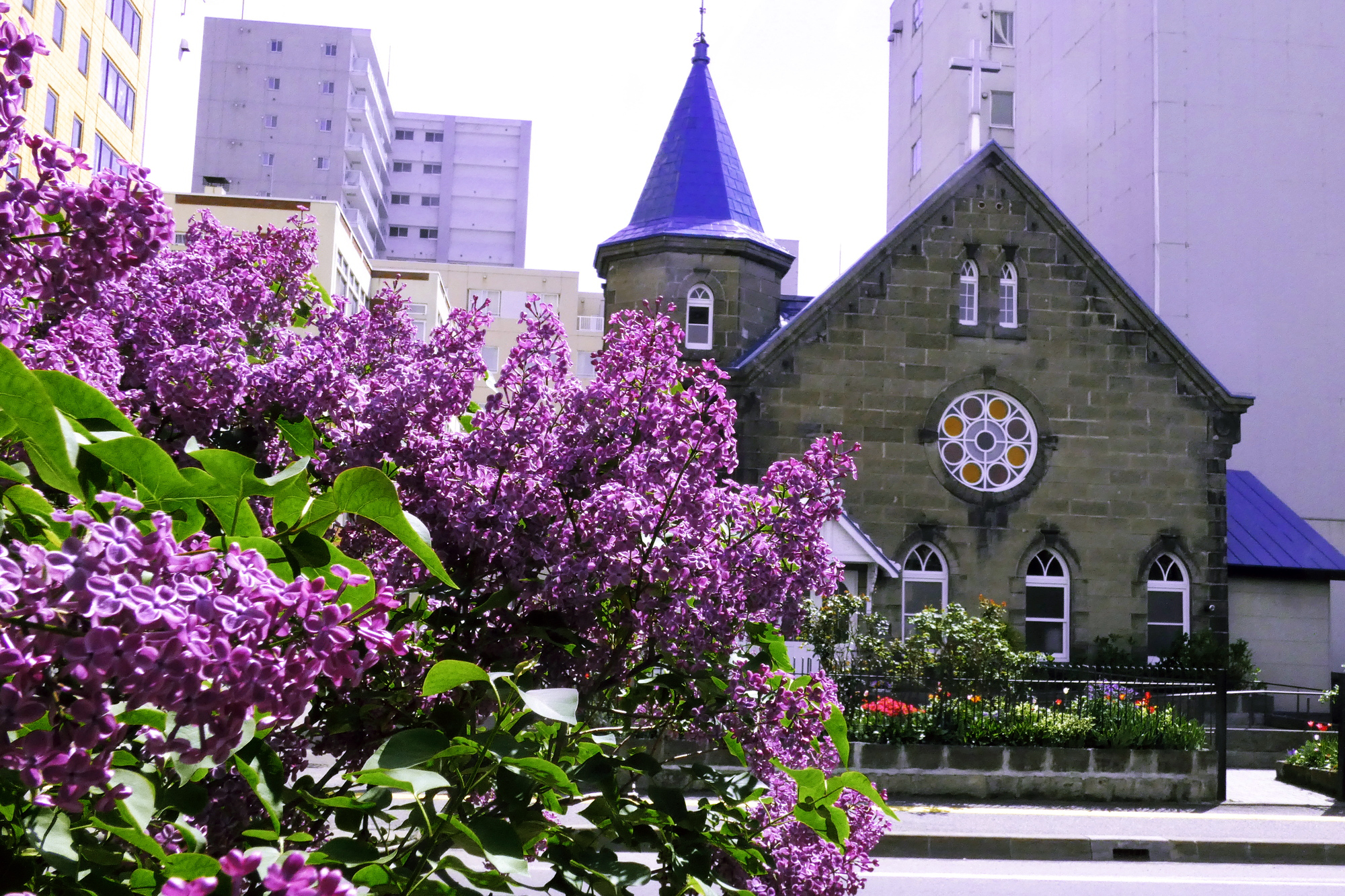
The language of flowers for purple lilacs includes ‘budding love’ and ‘first love’. It would be a good gift for a girlfriend, boyfriend or other loved one, or for a marriage proposal. It would also be a special touch to confess your love under the purple lilac flower in Sapporo.
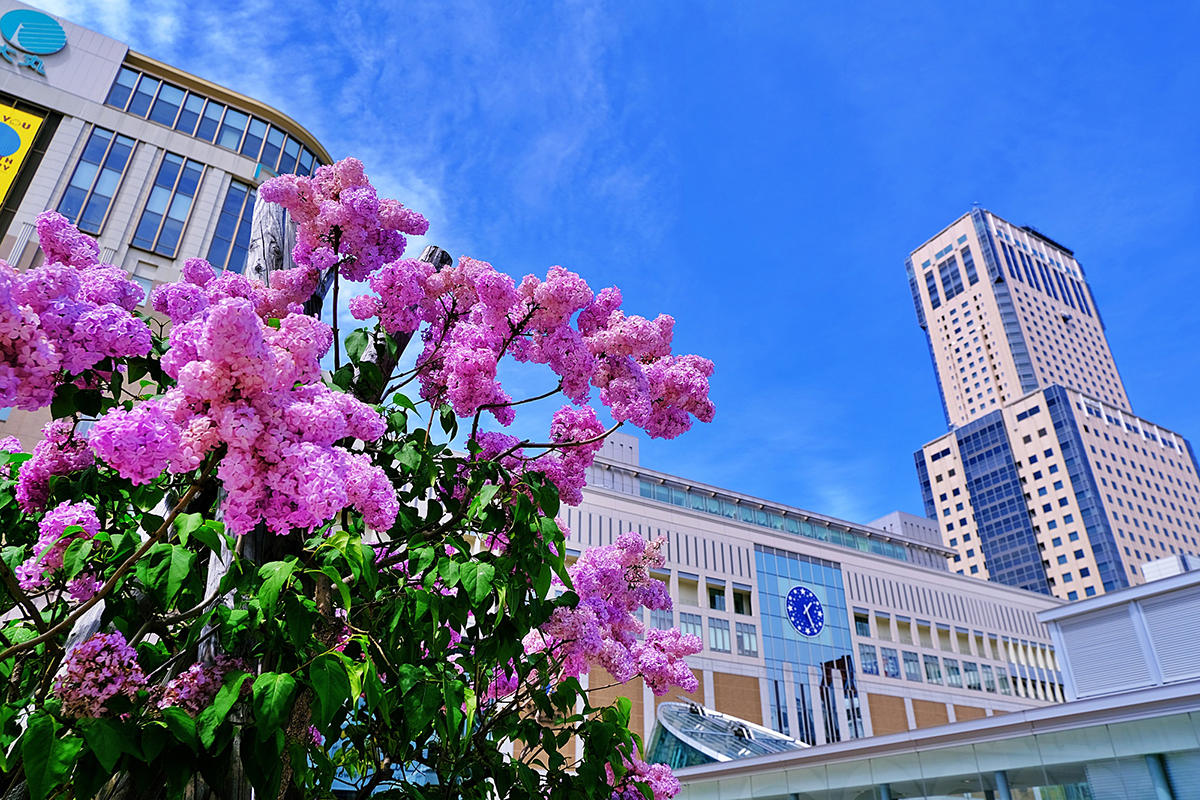
The language of flowers for pink lilacs is ‘memories’. If you give a pink lilac on the anniversary of a couple’s relationship, they will be able to look back on all the fun memories they have had. And if you give them on Mother’s Day, you may be able to tell your mother how much you appreciate her making so many happy memories.
Are Lilacs really important to Sapporo? Yes, they are!
It is said that lilacs were first brought to Japan in 1879.Richard Yousden, the British consul in Hakodate at the time, said: ‘Just as sick people need hospitals, healthy people need places to rest’. And Hakodate Park was completed. It is said that Mrs Yousden brought lilac saplings from England and planted them there at that time. However, this story is surprisingly little known.
On the other hand, it is better known that Sarah C. Smith, founder of the Smith Girls‘School, now Hokusei Gakuen Girls’ Junior and Senior High School in Sapporo, brought lilac seedlings from her own garden to Sapporo when she temporarily returned to the USA in 1890. It is said that what she planted at the girl’s school and the Hokkaido University Botanical Garden was the beginning of the lilacs in Sapporo.
Later, it is believed that lilacs brought by Mrs. Smith were divided into plants by Sapporo citizens, or that lilacs brought to Sapporo in some other way were spread in the city.
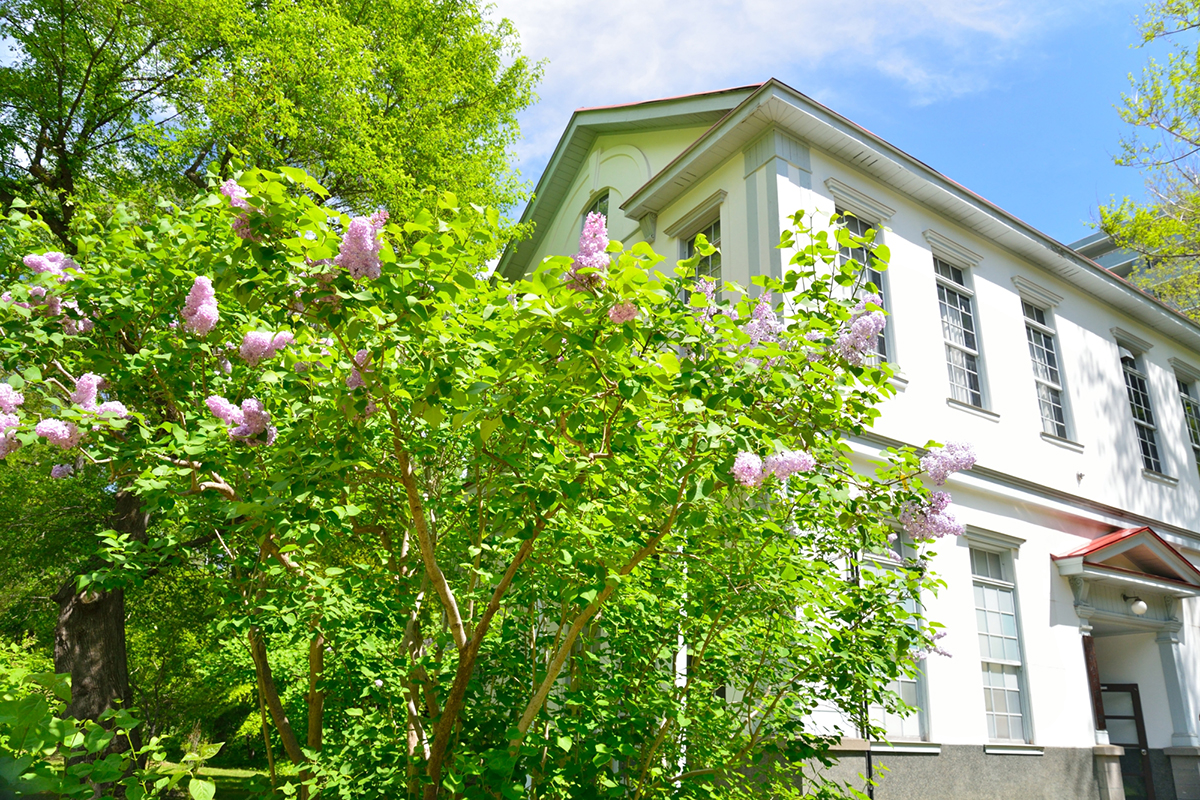
The oldest lilac in the Hokkaido University Botanical Garden is also believed to be a strain shared by Ms Smith, and it is thought to have spread quickly in the cool climate of Sapporo.
The scent of lilacs is a vivid reminder of spring in Sapporo!
Recommended parks in Sapporo where you can see lilacs
Odori Park
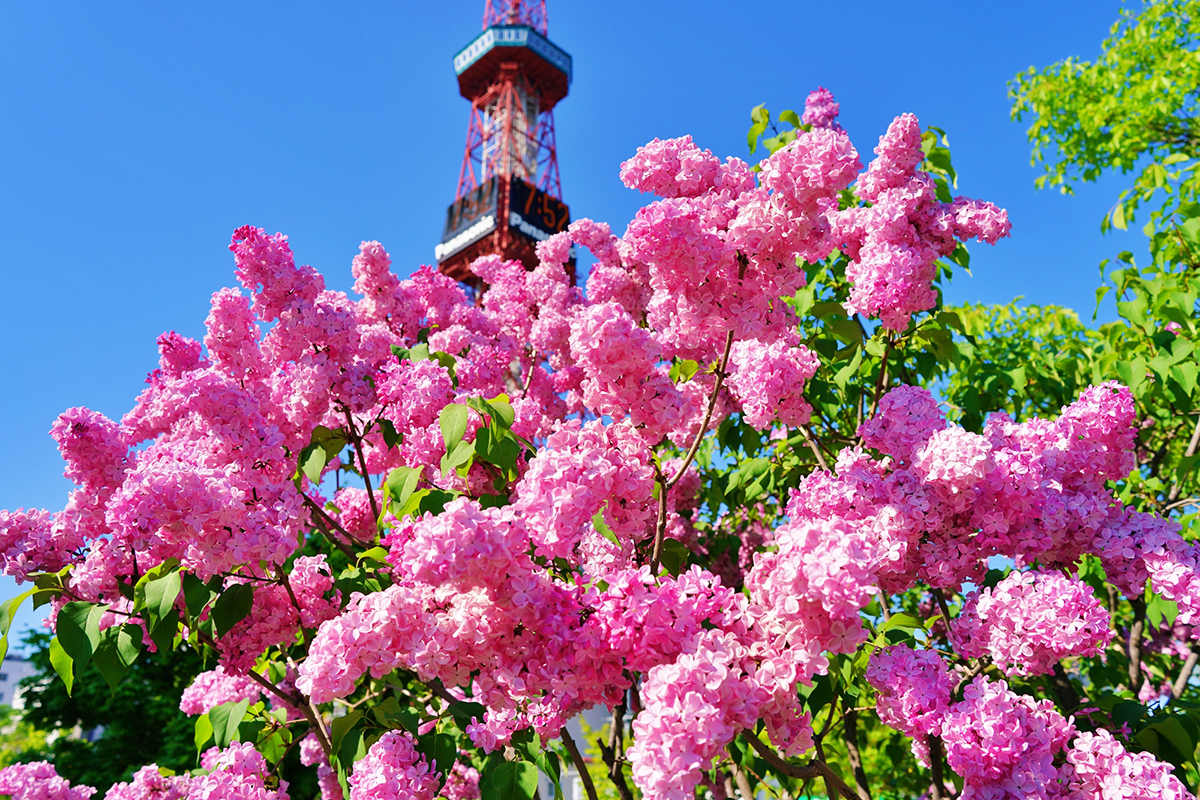
Odori Park is called a park but is actually a road. In 1871, a firebreak line was built to divide central Sapporo into north and south, which was renamed Odori later.
Odori Park, which runs east-west across central Sapporo for 1.5 km, is surrounded by beautiful seasonal flowers, lawns and trees, and is an oasis of recreation and relaxation for citizens and visitors alike. It is also Hokkaido’s premier venue for seasonal events such as the YOSAKOI Soran Festival, Snow Festival and White Illumination etc.
Here is also the main venue for the Sapporo Lilac Festival, which will be explained in more detail later, is planted with about 400 lilacs, and the first Lilac Festival was held here in 1959, the year before lilacs became a symbol of Sapporo City.
At the Lilac Festival, the park serves as a focal point for events such as commemorative tree distribution, concerts and a food court, where you can admire the lilacs and taste a wide variety of Hokkaido delicacies on your palate.
Kawashimo Park
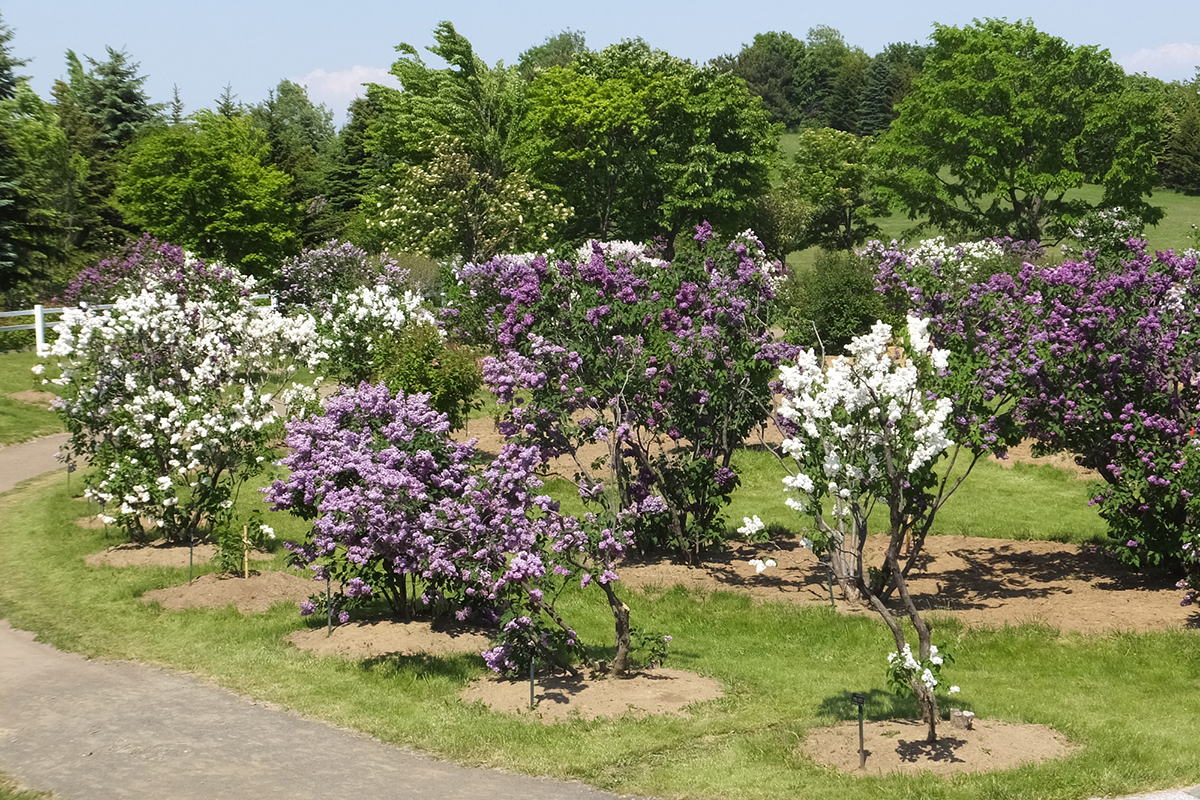
The park’s Lilac Forest offers the largest collection of lilacs in Japan, with 1,700 plants of about 200 varieties from all over the world. You will be surprised at how different the colors and shapes of the different varieties are.
Here, the descendants of the trees donated to Massachusetts, USA, in 1876 by Dr Clark, who was associated with the development of Hokkaido and was head teacher at Sapporo Agricultural College, the predecessor of Hokkaido University, are planted in the Lilac Forest of Kawashimo Park.
The city of Sapporo, which has the lilac as its municipal tree, created this park as a place where citizens and many visitors can enjoy the splendor of the lilac, which is well suited to Sapporo’s cool climate.
This is also the venue for the Lilac Festival.
Sosei River Park
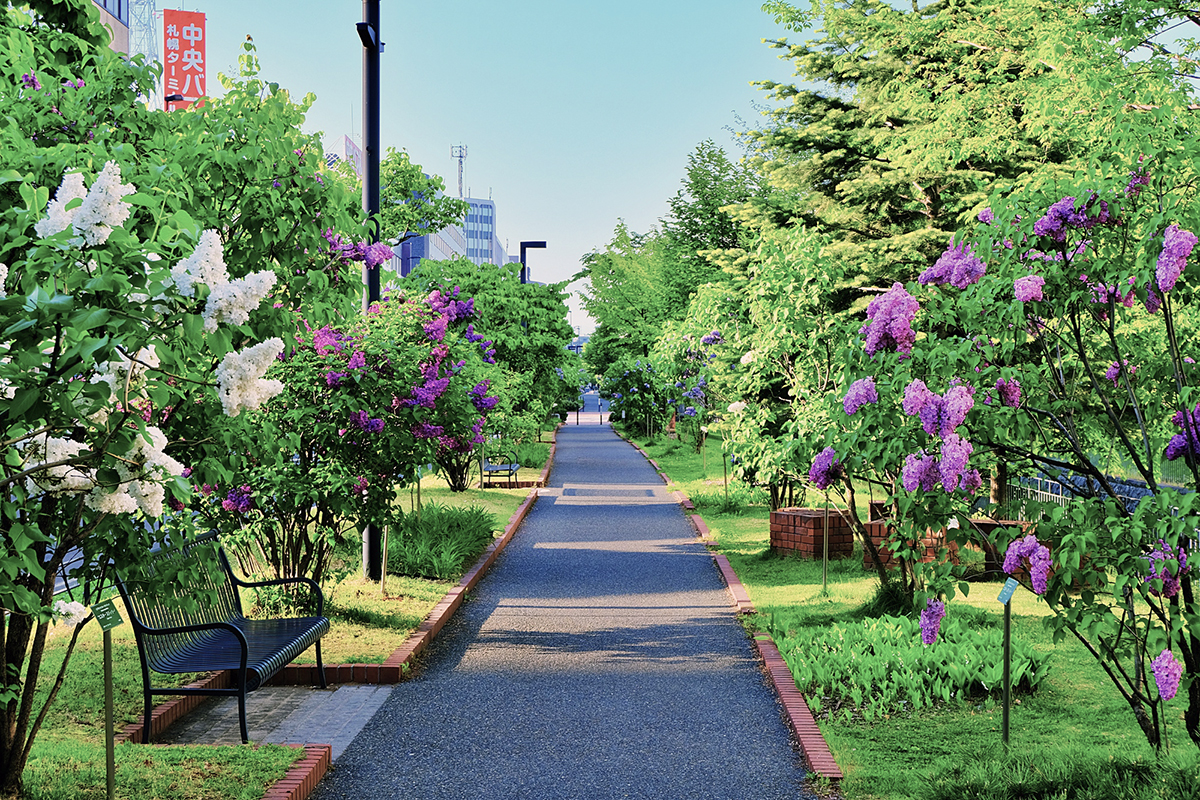
Opened in 2011, the park is adjacent to Odori Park, where visitors can enjoy ”the Lilac Walk”, along the parkway surrounded by lilacs in the heart of the city.
It is also a water, green and art-friendly Park with trees, flower beds and sculptures. There are also many lily-of-the-valley beds there. And it is nice to sit on a bench and admire the flowers or listen to the murmur of the river.
Nakajima Park

The sandbar of the Toyohira River, which flowed violently in a web-like pattern while creating a fan-shaped area, became Nakajima Park later.
Although this park is located almost in the center of the city with Mt Moiwa in the background, it is a popular place for recreation and relaxation with abundant water and greenery.
Nakajima Park, where the Junichi Watanabe Literature Museum, author of ”The City of Lilas Chill”, is located not far from the park, offers a collaboration between and Lilacs and sculptures in the city.
The term ‘lilas chill’ refers to the temporary drop in temperature when this flower blooms in Hokkaido.
The term ‘Lilas Chill’ was coined from this novel, a story of love and conflict between a man and a woman who meet in a strange turn of events in the beautiful city of Sapporo, written by the famous novelist Junichi Watanabe.
Yurigahara Park
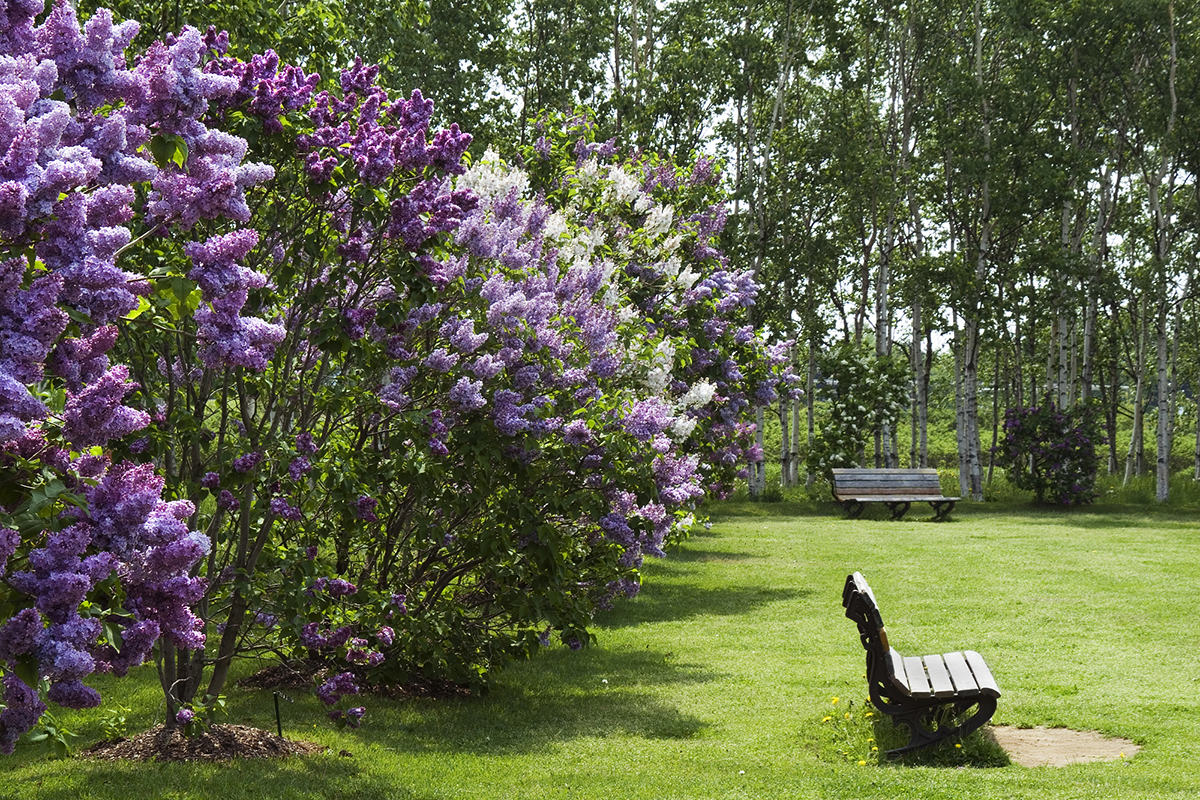
This is a large park with some 6,400 plant species growing on a large area of about 25 ha.
The Lilac Collection there, set against a backdrop of birch woodland, has lilacs planted around the lawn and along the footpath facing the entrance is a magnificent 650 m long line of lilac trees.
Maeda Forest Park
A comprehensive park in Hokkaido’s typical natural landscape, where you can enjoy activities ranging from daily walks, play and relaxation on the large lawn, nature observation and photography, full-scale running, cross-country skiing in winter, barbecues and park golf.
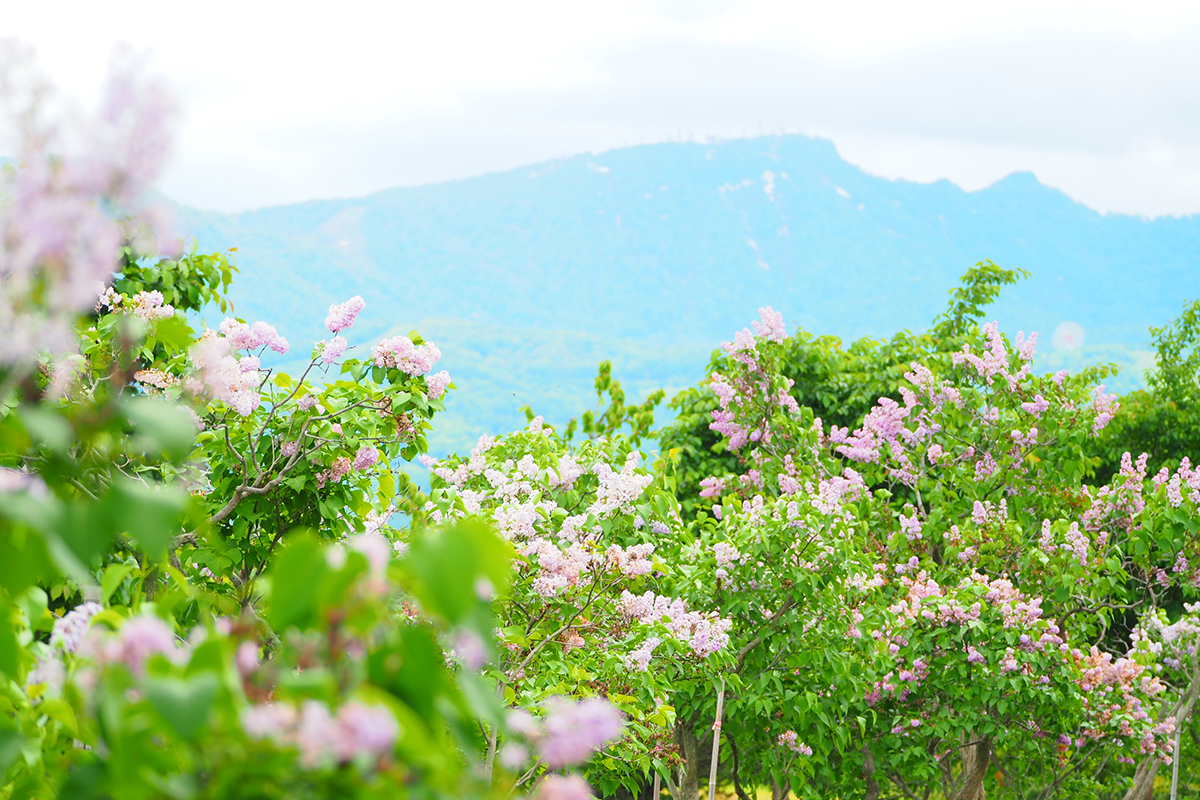

Lilacs are planted along the center of the parkway, arranged between forests. Both wisteria and lilac flowers there might be enjoyed at the same time of year.
Sapporo Lilac Festival…Must to see!
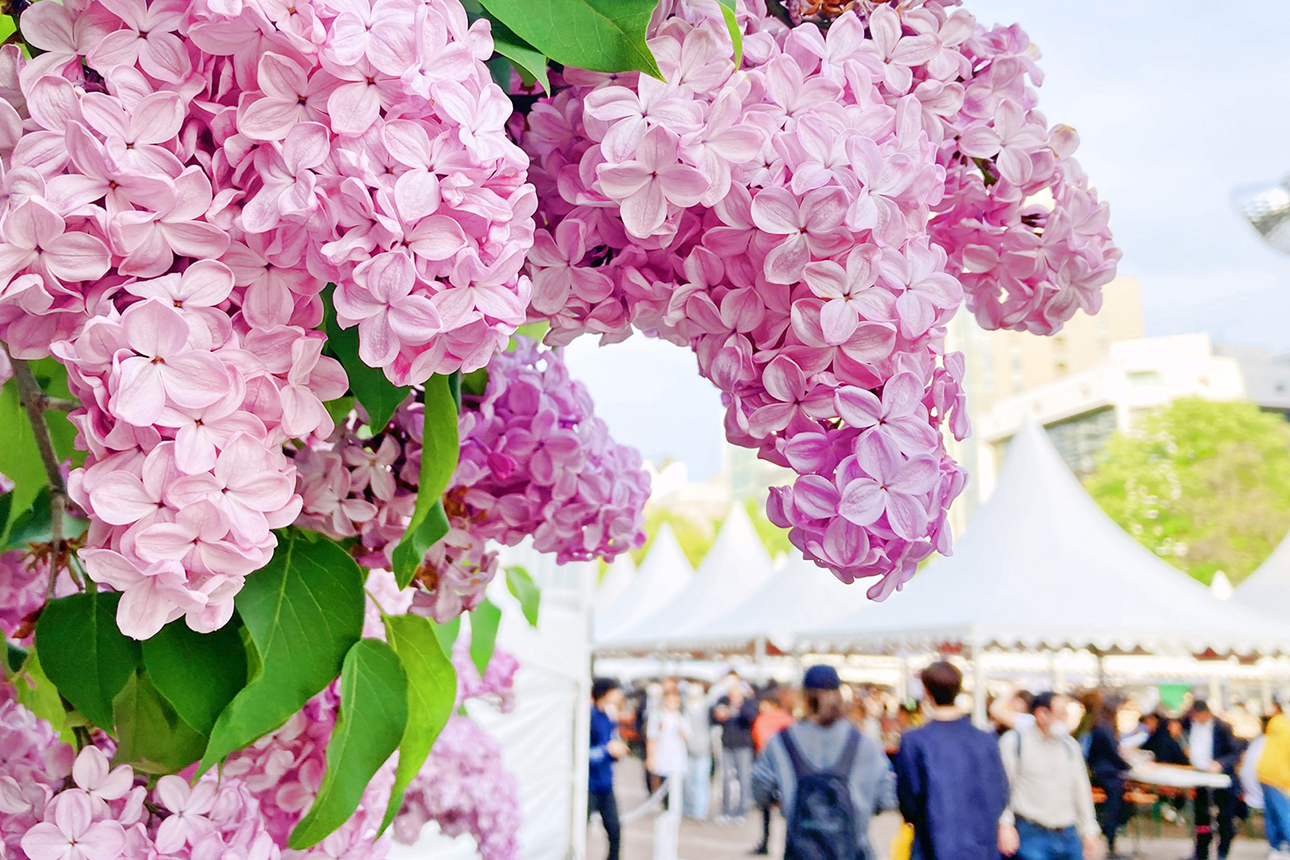
Now let’s go out to the Lilac Festival.
The Lilac Festival, held in May this year, began in 1959 with the aim of creating a cultural event during the lilac blossom season.
It was initiated in response to a call from cultural figures to organize a cultural and fragrant event in the season of lilac flowers.
It has now become firmly established among the citizens of Sapporo and has grown into one of the city’s leading spring events.
The Lilac Festival has two venues, the Odori venue and the Kawashimo venue, and in 2025 the Odori venue, main one, will be open from 14 to 25 May and the Kawashimo venue on 24 and 25 May, just 2 days.
Visit Sapporo first and enjoy the Lilac Festival to the fullest. Also, when you visit the two venues, please pay attention to the number of lilac petals.
Single lilacs usually have four petals, but if you find one with five, it is called a ‘lucky lilac’ and is said to bring happiness. Like the four-leaf clover, the five-petal lilac is considered a lucky item.
If you find a flower with five petals, swallow it without telling anyone and you can ‘be with the one you love forever’. This is a lovely spell called ‘Lucky Lilac’.
Try to find a lucky lilac with five petals in Sapporo, to take advantage of the spell. If you can find it, it could be a good day in your trip!
Odori venue
The Odori venue 5-Chome is open only 14-18 May and mainly occupied by booths where you can enjoy shopping and demonstrations.
The details are not yet clear, but a Lilac Teahouse will be opened, as it was last year. If this time also might follow last year’s activities, Japanese tea sommeliers will introduce how to brew new tea and the taste of hand-rubbed tea. A roasting furnace will be set up in the center of the booth for hand-rubbing demonstrations, where you can watch the time-consuming technique of hand-rubbing. The tea will be served with sweets, and you can enjoy the hand-rubbed tea with two different temperatures. It is also fun to find your favorite tea by comparing three new teas from different production regions.
At the Lilac Festival, the Odori Park serves as a focal point for events such as concerts and a food court, where you can admire the lilacs and taste a wide variety of Hokkaido delicacies on your palate.
In addition, there will be an ikebana or flower arrangement display area, where ikebana works using lilac flowers and other plants will be seen.
There will be also a lilac display, a consultation corner on how to grow lilacs, lilac saplings and original lilac-related goods for sale.
Antiques are displayed and sold as well, and treasures brought in by citizens and others are appraised free of charge.
On weekends, a fun old games experience corner for parents and children!
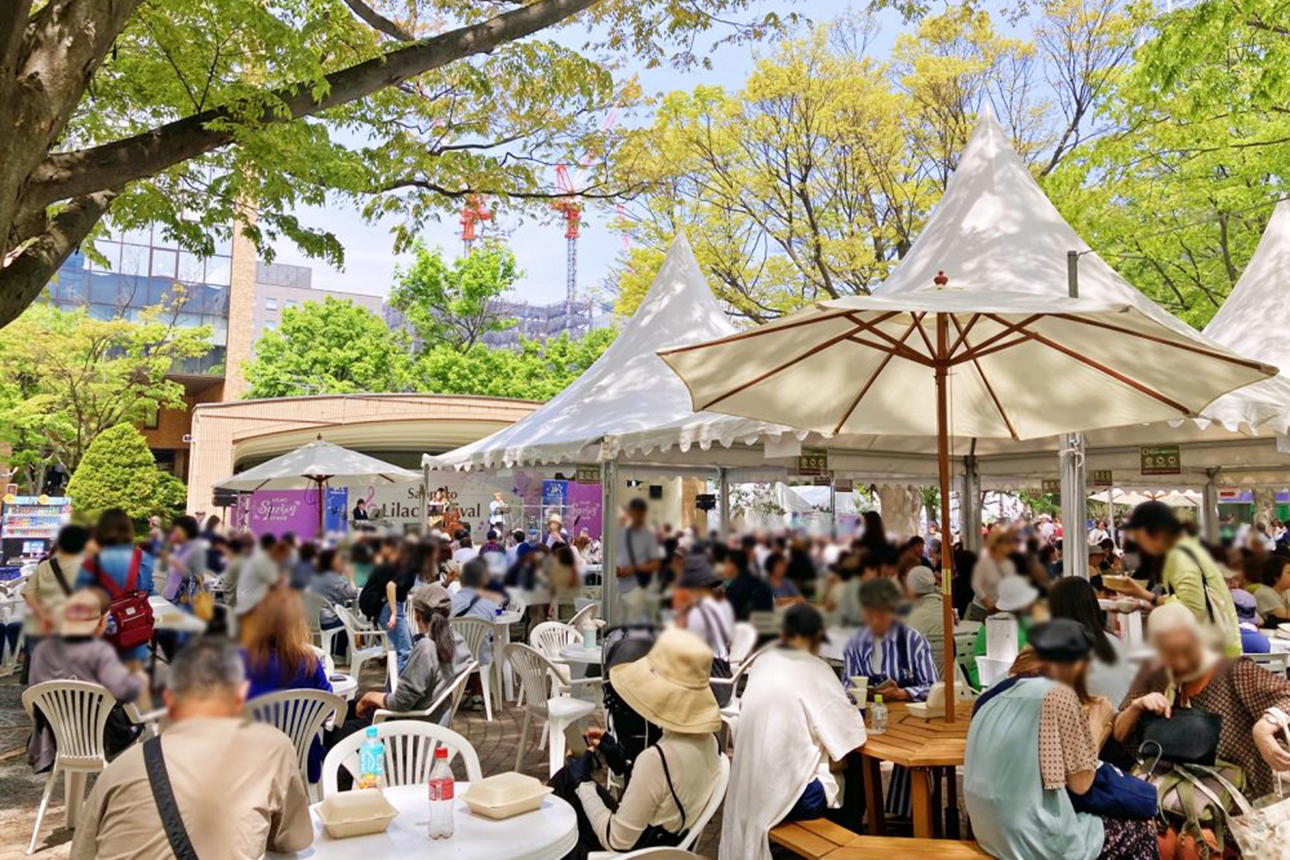
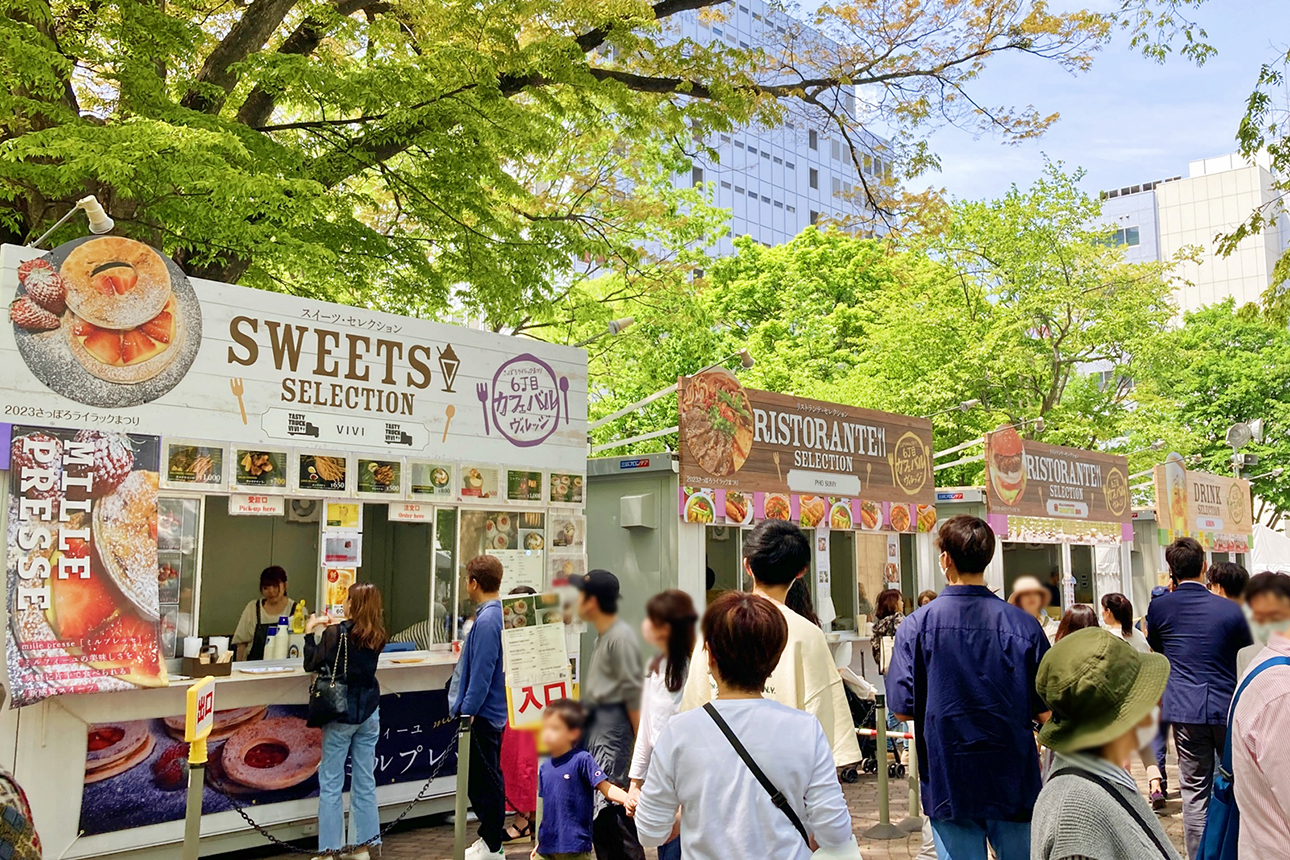
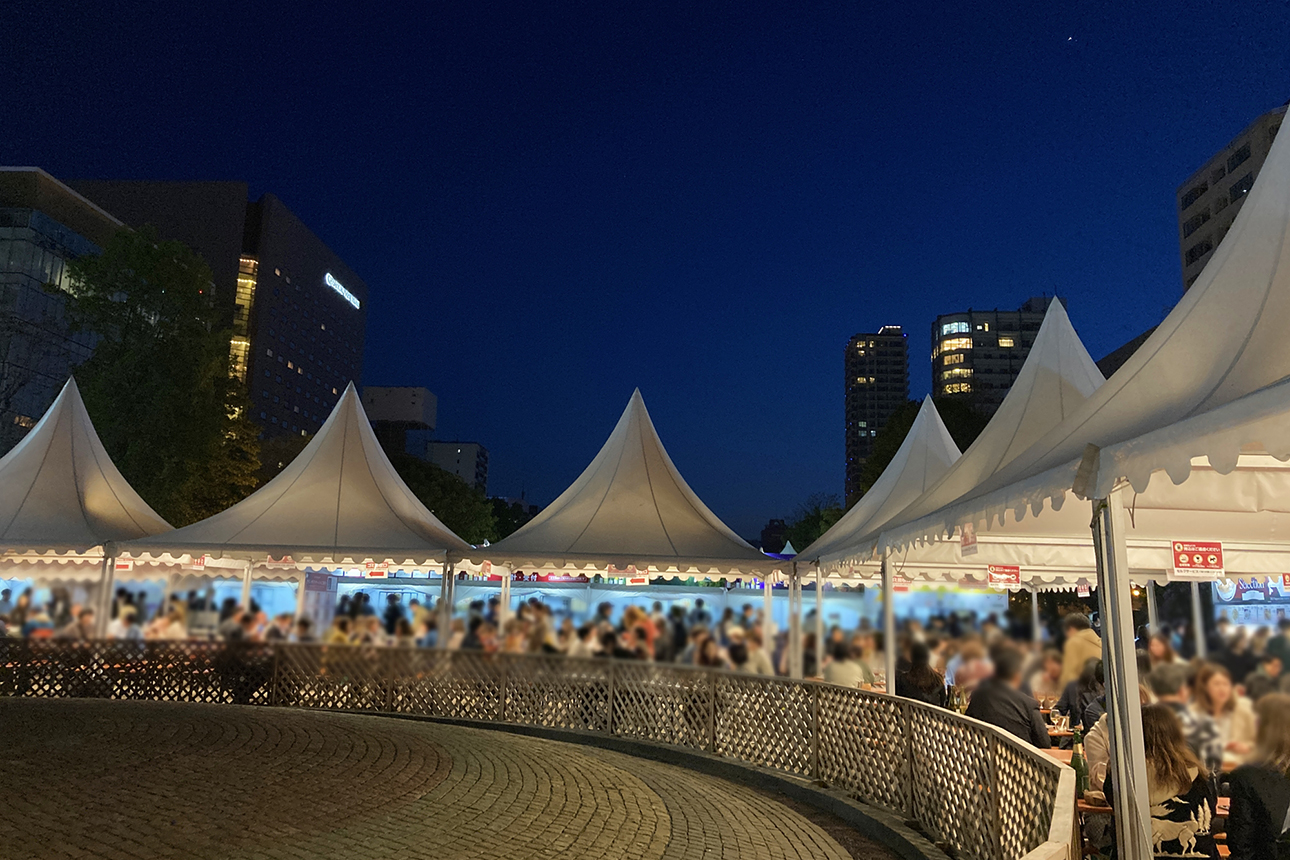
In Odori Venue 6-Chome, a café and coffee shop awaits you at lunchtime and a bar awaits you at night. There’s the 6-Chome Café & Bar Village, where you can enjoy popular café meals, sweets and snacks during bar time. Enjoy the smell of lilacs and a special gourmet meal with a live stage!
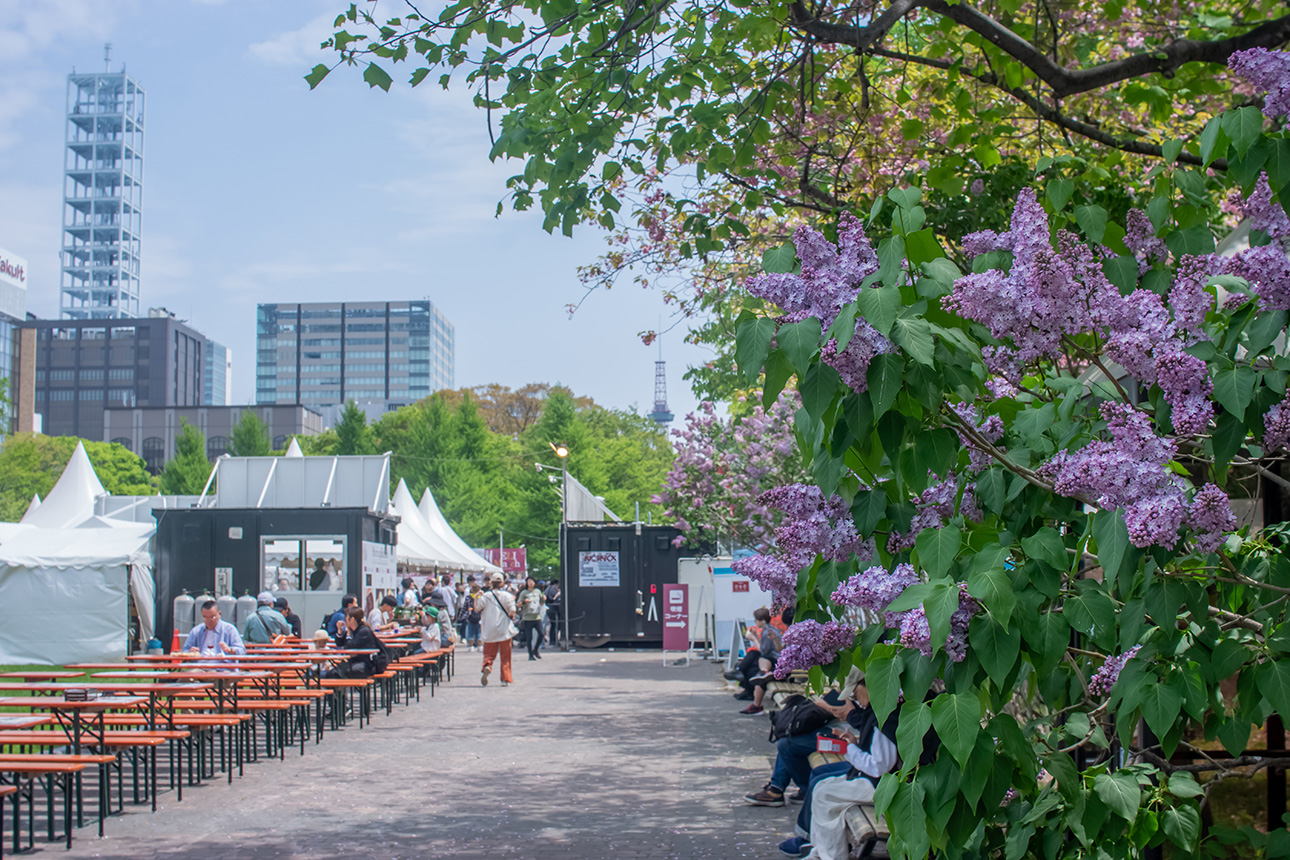
This year, the bar that opened in Lilas Terrace in the Odori Park Nishi 6-chome, where we could enjoy popular craft beers from Sapporo, attracted particular attention.
We could enjoy there a variety of beers by Sumikawa Brewery, Streetlight Brewing, Susukino Brewing, Trans Brewing, and Moon & Sun Brewing, which change daily.
There, we were also able to enjoy a limited edition beer made especially for the Lilac Festival.
This is a joint development between Sumikawa Brewery and PioBeer, a start-up founded by a graduate student at Hokkaido University, who did not have their own brewery and came up with the concept of their original beers, having the beers brewed at other breweries.
After completing his third year of university, Miyaji-san, the representative of PioBeer, took a year off to participate in an overseas agricultural training program in the Netherlands. He had always loved beer. And during his holidays he would travel to Germany, the United Kingdom, and Belgium, etc. to learn about the diverse flavors and cultures of beer, becoming even more passionate about it.
On the other hand, Saito-san, the representative of Sumikawa Brewery, also has a unique background. Before starting beer brewing, he worked as an engineer for a computer manufacturer, and later contributed to the spread of the Internet in Japan. Driven by his passion for manufacturing and his love of beer, he decided to start brewing beer. And it should be noted that all the brewing equipments are also handmade.
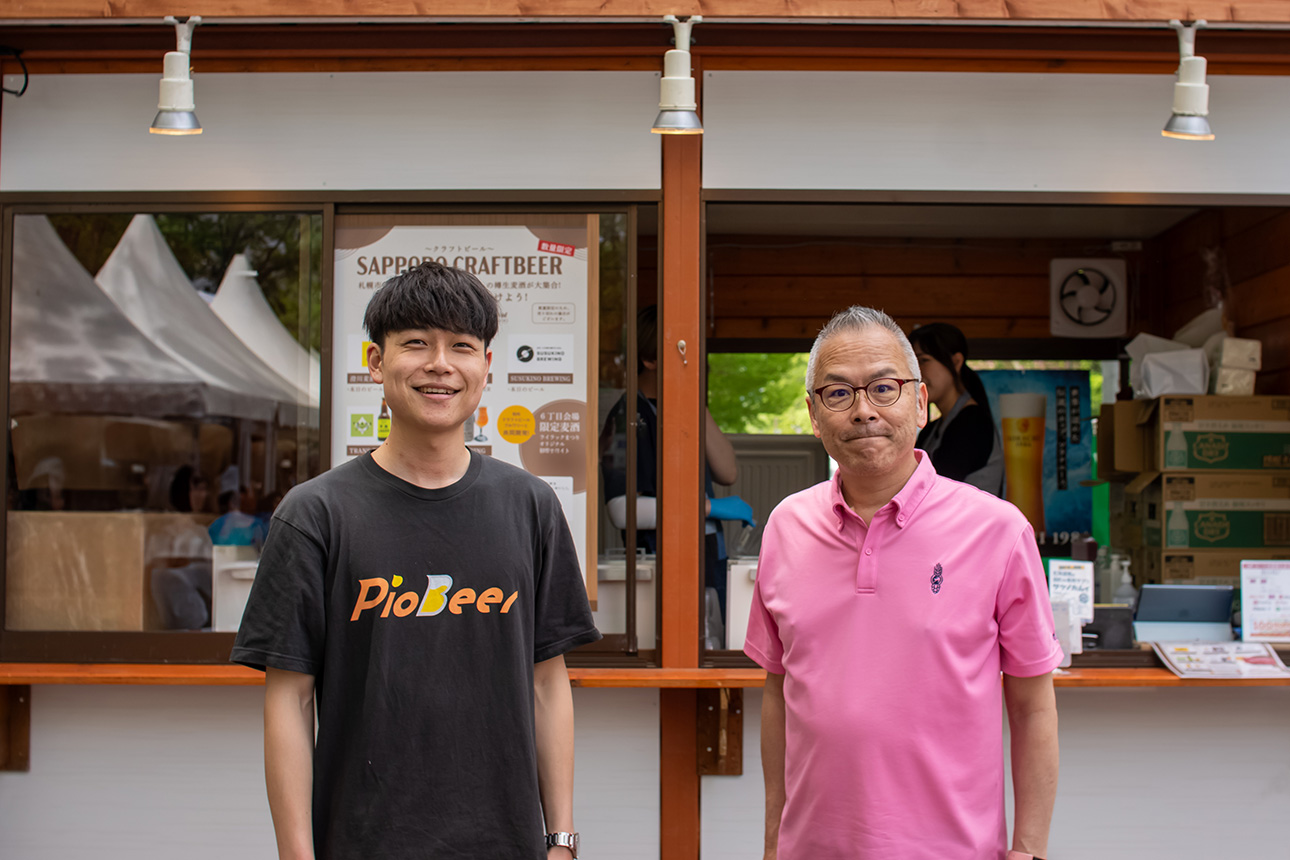
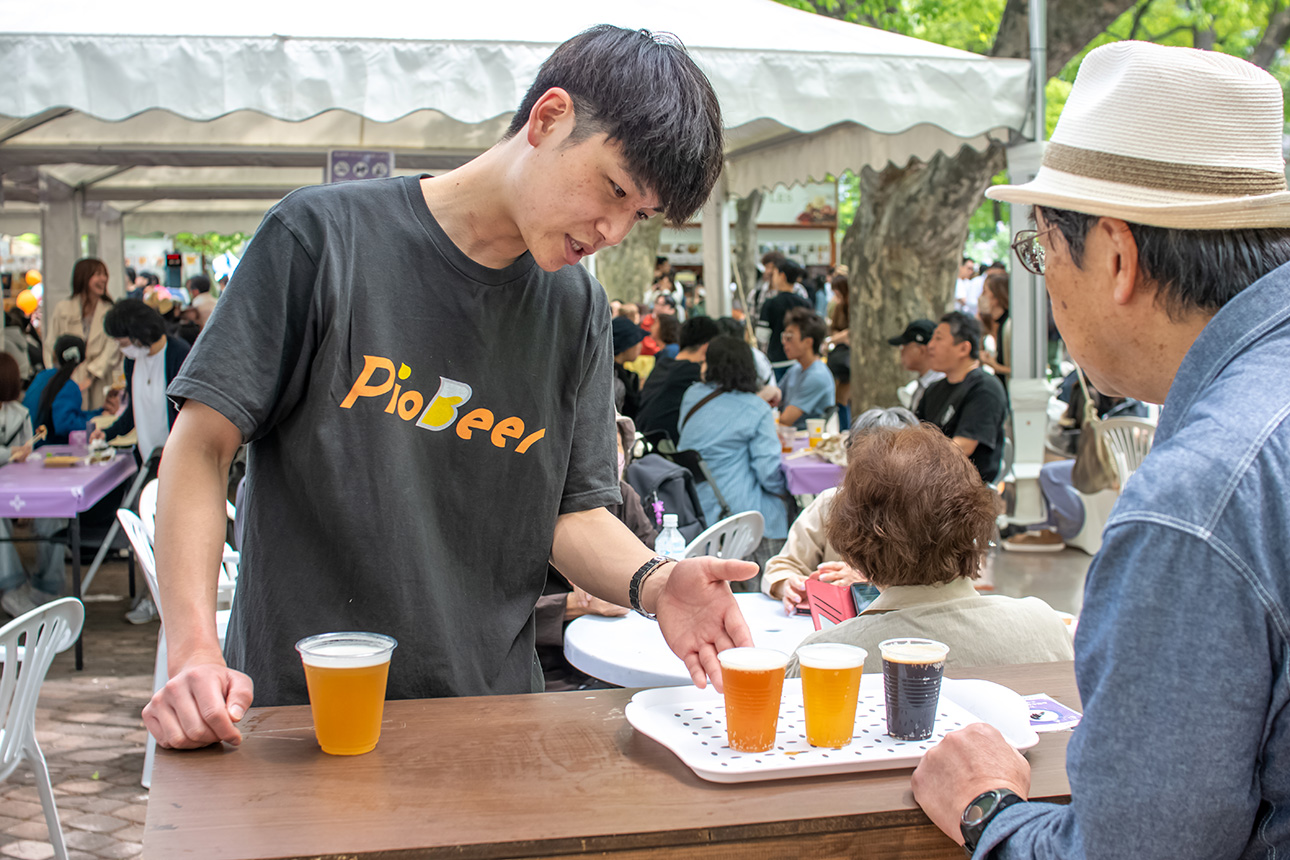
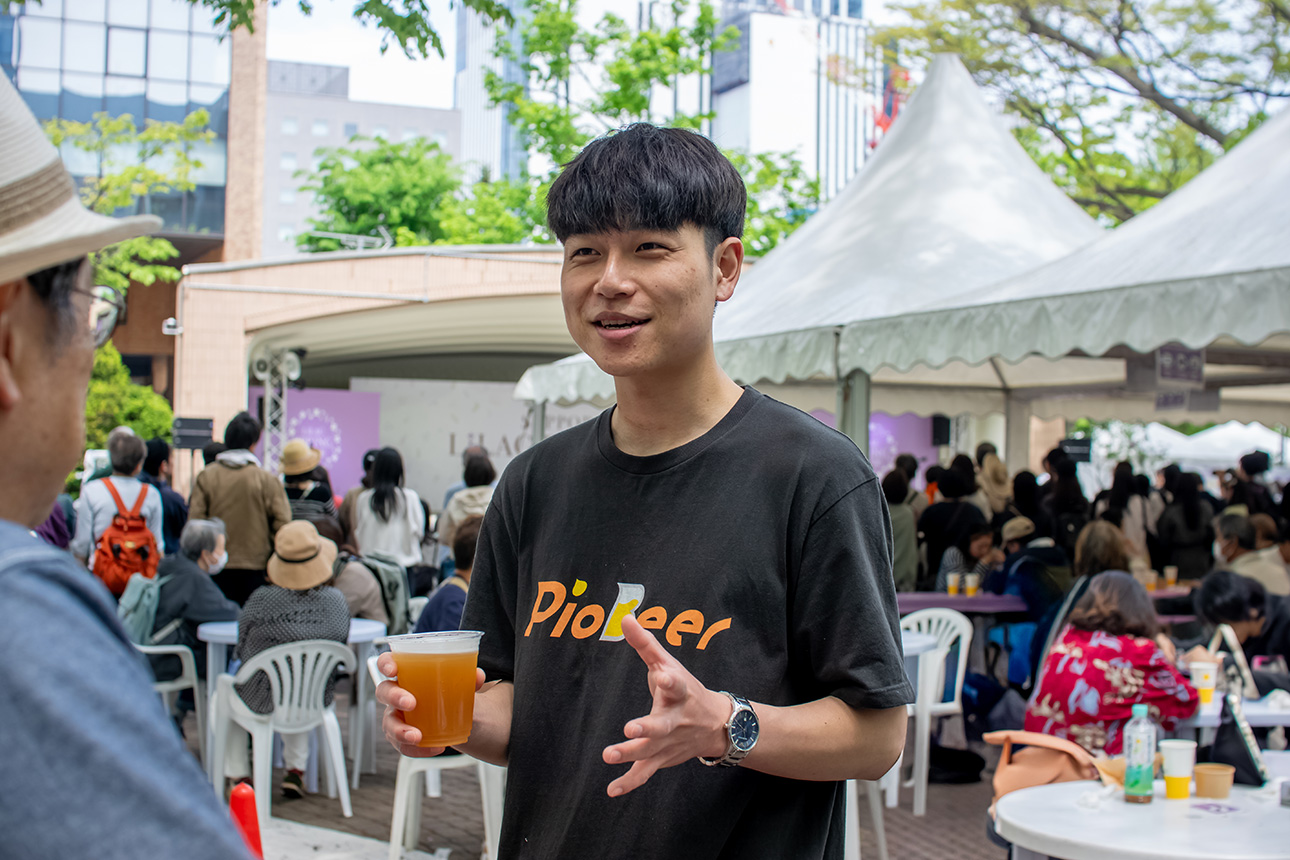
These two beer enthusiasts collaborated to create ’First Love White’ for the Lilac Festival.
This beer is a kind of Belgian white beer. It is made with wheat, giving it a light mouthfeel. And orange & lemon peel are added to give it a sweet and sour taste.
The flower language of purple lilacs is ‘the budding of love’ and ‘the first love,’ which seems to fit this beer perfectly.
This is just a small part of the opportunities to encounter diverse craft beers. And in the future, we will be able to enjoy even more unique craft beers.
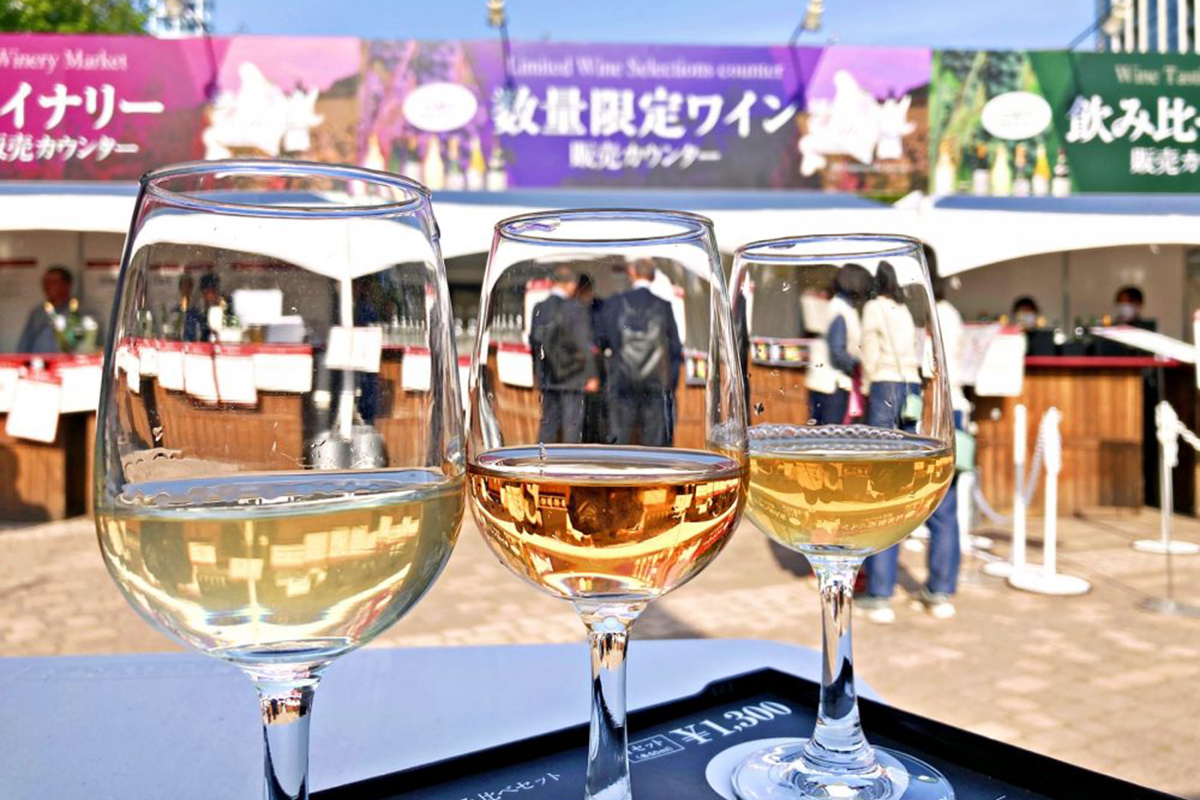

Hokkaido wine event with the largest line-up, Lilac Wine Garden will be held at the Odori Venue 7-Chome! You can enjoy a total of more than 200 Hokkaido wines from over 50 wineries & vineyards in Hokkaido, according to your taste.
As you may already know, the number of wineries in Hokkaido has tripled over the past ten years to 71 as of February 2025, and in recent years has attracted attention both domestically and internationally, including the recognition of Hokkaido as a GI or Geographical Indication, the registration of the original Hokkaido grape variety, Yamasachi with the OIV or International Organization of Vine and Wine, the entry of a foreign winery into Hokkaido, and awards at international wine competitions.
You have so many different types that you are not sure which one to choose. Don’t worry, the team of wine guides are on hand to recommend the type of wine you prefer.
In addition, food and drink seating will be arranged around the fountain and food corners will be set up to the venue of the northern and southern sides. So you can enjoy wines there to the fullest.
Kawashimo Venue
Lilacs were one of the major flowering plants in the USA, Canada and Europe at the time, but in Japan there was a slow introduction of varieties and no coherent collection of varieties. Therefore, the city of Sapporo, which has lilacs as its municipal tree, created the Lilac Garden as a place where citizens and many people can enjoy the beauty of lilacs, which are suited to the cool climate of Sapporo. The collection of lilacs in Kawashimo Park is based on the selection of varieties suited to the climate of Sapporo, many of which were supplied by branches from the Royal Botanical Gardens in Canada and propagated by grafting, with others collected from the USA, China and Germany.
At this venue, there will be a lilac guided tour through the lilac forest, free lilac saplings and a concert where you can have a great time listening to fresh music.
One of the tips for you
Incidentally, the lily-of-the-valley, lilac and cuckoo were chosen as one of flowers, trees and birds suitable for Sapporo in 1960 to commemorate the city’s population of over 500,000 and its sister city affiliation with Portland, USA.
Furthermore, the Bullet Train or Shinkansen and express trains that you might use when travelling in Hokkaido are also associated with lilacs.
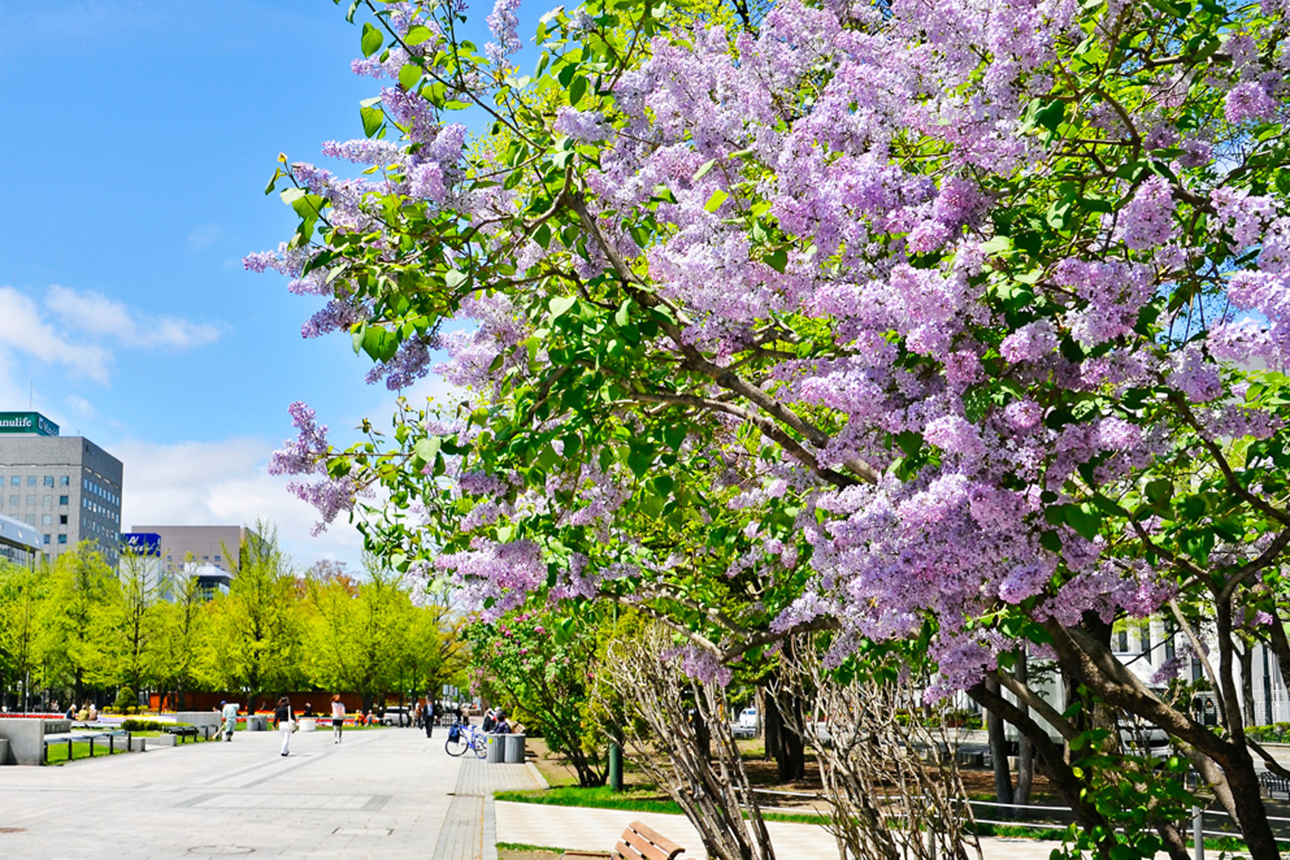
The color of the central band on the Hokkaido Shinkansen car body is purple, reminiscent of lilac.
‘Lilac’ is also the nickname of the express train between Sapporo Station in central Hokkaido and Asahikawa Station in northern Hokkaido, which is well known to Sapporo and other Hokkaido residents.
What especially comes to mind for many Japanese when they hear this flower language such as friendship’, ‘humility’, ‘memories of youth’ and ‘purity’, is the hit song”Lilac” by the popular Japanese rock band, Mrs. Green Apple? It is a sad and beautiful coming-of-age song about wanting to cherish the memories of youth that have passed, and not wanting to forget the past while growing up and looking to the future.
Now that you know how the lilac has become the local tree and flower of Sapporo, wouldn’t you like to visit Sapporo and other areas of Hokkaido with the scent of lilacs during this season?
Now, choose the places that suit your taste and enjoy it to the fullest during your trip! However, if you think it’s hard to find such places on your own, why not take a tour first? We, Hokkaido Treasure Island Travel Inc., can offer you a lot of attractive and precious experiences here in your tour.
